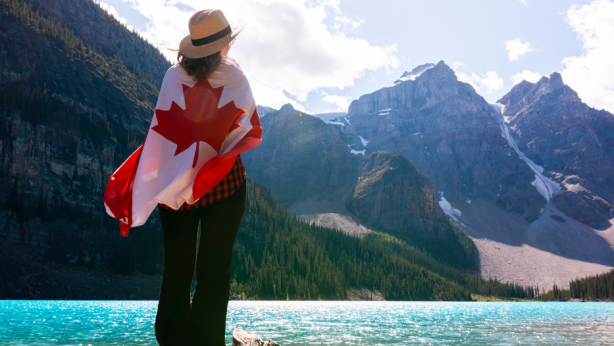How to Plan a Road Trip in Canada (step-by-step guide)

**Please review the disclaimer at the end of this document before reading or using this guide.
Canada is a vast and diverse country, offering stunning landscapes, vibrant cities, and unique cultural experiences that are best explored by road. Whether you’re interested in the rugged coastlines of the Maritimes, the majestic Rocky Mountains, or the scenic drives of Ontario and Quebec, a road trip in Canada can be an unforgettable experience. For new immigrants, planning a road trip might seem daunting, but with the right preparation, you can make the most of your journey. This guide provides information on how to plan a road trip in Canada.
Step 1: Choose Your Destination
- Popular Road Trip Routes:
- Trans-Canada Highway: This highway spans the entire country, from St. John’s, Newfoundland, to Victoria, British Columbia, offering a cross-country experience with diverse landscapes.
- Cabot Trail (Nova Scotia): A scenic drive around Cape Breton Island, known for its coastal views, hiking trails, and cultural experiences.
- Icefields Parkway (Alberta): Connecting Banff and Jasper National Parks, this route offers breathtaking views of the Rocky Mountains, glaciers, and wildlife.
- Sea-to-Sky Highway (British Columbia): A drive from Vancouver to Whistler, with stunning views of the Pacific coastline, mountains, and waterfalls.
- The Great Lakes Route (Ontario): Explore the shores of Lake Ontario, Lake Erie, and Lake Huron, with stops in Toronto, Niagara Falls, and charming small towns.
- Consider Your Interests:
- Nature and Wildlife: Explore national parks like Banff, Jasper, or Algonquin for hiking, camping, and wildlife spotting.
- Cultural and Historic Sites: Visit cities like Quebec City, Montreal, and Ottawa for a mix of cultural experiences and historical landmarks.
- Adventure and Activities: If you enjoy outdoor activities, consider destinations that offer kayaking, skiing, or mountain biking.
- Time and Distance:
- Consider how much time you have and the distance you’re willing to drive. Canada is a large country, so plan your route according to the time you have available.
Step 2: Plan Your Route and Stops
- Map Out Your Route:
- Use GPS navigation tools like Google Maps or a dedicated GPS device to plan your route. Enter your starting point and destination, and let the app suggest the best path, including estimated driving times and distances.
- Plan Key Stops:
- Identify key stops along your route where you can rest, refuel, and explore. These might include national parks, towns, and attractions you’d like to visit.
- Consider booking accommodations in advance, especially during peak tourist seasons, to ensure you have a place to stay.
- Check Road Conditions:
- Before you set out, check the road conditions for your route. Websites like 511 Canada provide real-time road conditions, closures, and weather updates for different provinces.
- Plan for Breaks:
- Schedule regular breaks to rest, eat, and stretch. Long drives can be tiring, so it’s important to stay refreshed.
Step 3: Prepare Your Vehicle
- Vehicle Maintenance:
- Ensure your vehicle is in good condition before hitting the road. Check the oil, tire pressure, brakes, and fluid levels. If you’re not comfortable doing this yourself, take your car to a mechanic for a pre-trip inspection.
- Emergency Kit:
- Pack an emergency kit that includes items like a first-aid kit, flashlight, jumper cables, spare tire, tire jack, blanket, water, and non-perishable snacks.
- Fuel and Charging Stations:
- Plan your fuel stops in advance, especially if you’re traveling through remote areas. If you’re driving an electric vehicle (EV), research the locations of charging stations along your route.
- Navigation and Communication:
- Bring a reliable GPS device or ensure your smartphone has a navigation app. Consider having a physical map as a backup in case you lose signal. Also, carry a car charger for your devices.
Step 4: Pack Smartly
- Clothing and Essentials:
- Pack clothing suitable for the weather and activities you plan to do. Canada’s weather can vary widely, so bring layers, including warm clothing, rain gear, and sturdy footwear.
- Food and Water:
- Bring snacks, water, and a cooler with perishable items. This is especially important if you’ll be driving through areas with limited dining options.
- Entertainment:
- Long drives can be tedious, so bring along entertainment like music playlists, podcasts, audiobooks, or travel games to keep everyone entertained.
- Documents:
- Carry your driver’s license, car registration, proof of insurance, and any necessary travel documents. If you’re renting a car, bring your rental agreement and contact information for the rental company.
Step 5: Understand Road Rules and Safety Tips
- Road Rules:
- Familiarize yourself with Canadian road signs, speed limits, and driving laws. Speed limits are posted in kilometers per hour (km/h), and vary by province and road type.
- Seat belts are mandatory for all passengers, and using a mobile phone while driving is illegal unless you’re using a hands-free device.
- Driving in Different Weather Conditions:
- Be prepared for changing weather conditions, especially if you’re driving through mountainous or coastal regions. Drive slowly in fog, rain, or snow, and maintain a safe distance from other vehicles.
- Wildlife Awareness:
- Watch for wildlife crossing signs, especially in rural and forested areas. Slow down and stay alert, particularly at dawn and dusk when animals are most active.
- Emergency Contacts:
- Know the emergency contact numbers for the areas you’re traveling through. In Canada, dial 911 for emergencies. It’s also a good idea to have contact information for roadside assistance services.
Step 6: Accommodations and Camping
- Booking Accommodations:
- If you prefer staying in hotels, motels, or bed-and-breakfasts, book your accommodations in advance to secure the best rates and availability.
- Use websites like Booking.com, Expedia, or Airbnb to find and book lodgings along your route.
- Camping:
- For a more immersive outdoor experience, consider camping in one of Canada’s national or provincial parks. Check the availability of campsites and make reservations where required.
- Bring appropriate camping gear, including a tent, sleeping bags, and cooking equipment. Be sure to follow park regulations and practice Leave No Trace principles.
Step 7: Enjoy the Journey
- Take Your Time:
- Road trips are as much about the journey as they are about the destination. Take your time to explore, stop at interesting sites, and enjoy the scenery.
- Photography and Memories:
- Capture your road trip memories with photos and videos. Don’t forget to take pictures of the beautiful landscapes, unique attractions, and fun moments along the way.
- Interact with Locals:
- Engage with locals at your stops to learn more about the area, get recommendations, and experience Canadian hospitality.
- Be Flexible:
- While planning is important, be flexible with your itinerary. If you discover an interesting detour or decide to spend more time at a certain stop, feel free to adjust your plans.
Additional Tips for New Immigrants
- Currency and Payments:
- Ensure you have Canadian currency for tolls, parking, and other expenses. Most places accept credit and debit cards, but it’s good to have some cash on hand for rural areas.
- Travel Insurance:
- Consider getting travel insurance that covers road trips. This can provide peace of mind in case of accidents, breakdowns, or unexpected cancellations.
- Language:
- Canada is a bilingual country, with English and French as official languages. While English is widely spoken, it’s helpful to know some basic French phrases if you’re traveling in Quebec or parts of New Brunswick.
- Cultural Awareness:
- Respect local customs and traditions, especially if you’re visiting Indigenous lands or communities. Be mindful of the environment and local wildlife.
Planning a road trip in Canada is an exciting way to explore the country’s natural beauty and diverse culture. By choosing the right destination, preparing your vehicle, understanding road rules, and packing smartly, you can create a memorable and enjoyable road trip experience. Whether you’re navigating coastal highways, mountainous routes, or scenic byways, the journey will offer you a unique perspective on what makes Canada so special. Welcome to Canada, and happy travels!
**DISCLAIMER: This document was prepared based on information gathered from various online sources. While our aim is to provide accurate and helpful information to newcomers in Canada, Active Action cannot be held responsible for any actions, outcomes, or situations that may arise from the use of this document. We strongly recommend that you verify any details with official sources or relevant authorities if you have any doubts or uncertainties about any information provided in this document. If you have any specific questions about the information in this document, or if you notice any inaccuracies or missing information, please inform us immediately through the contact form. We will respond to you as soon as possible and/or update the information as necessary.


